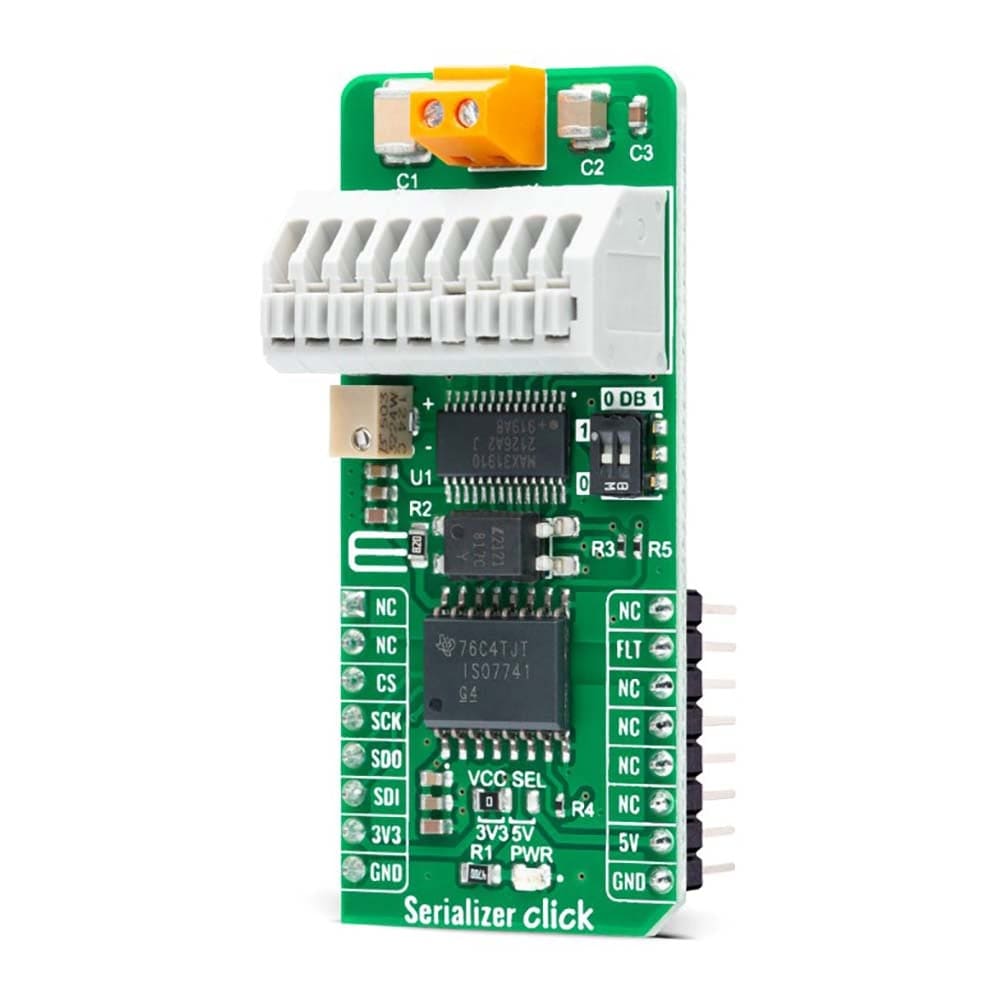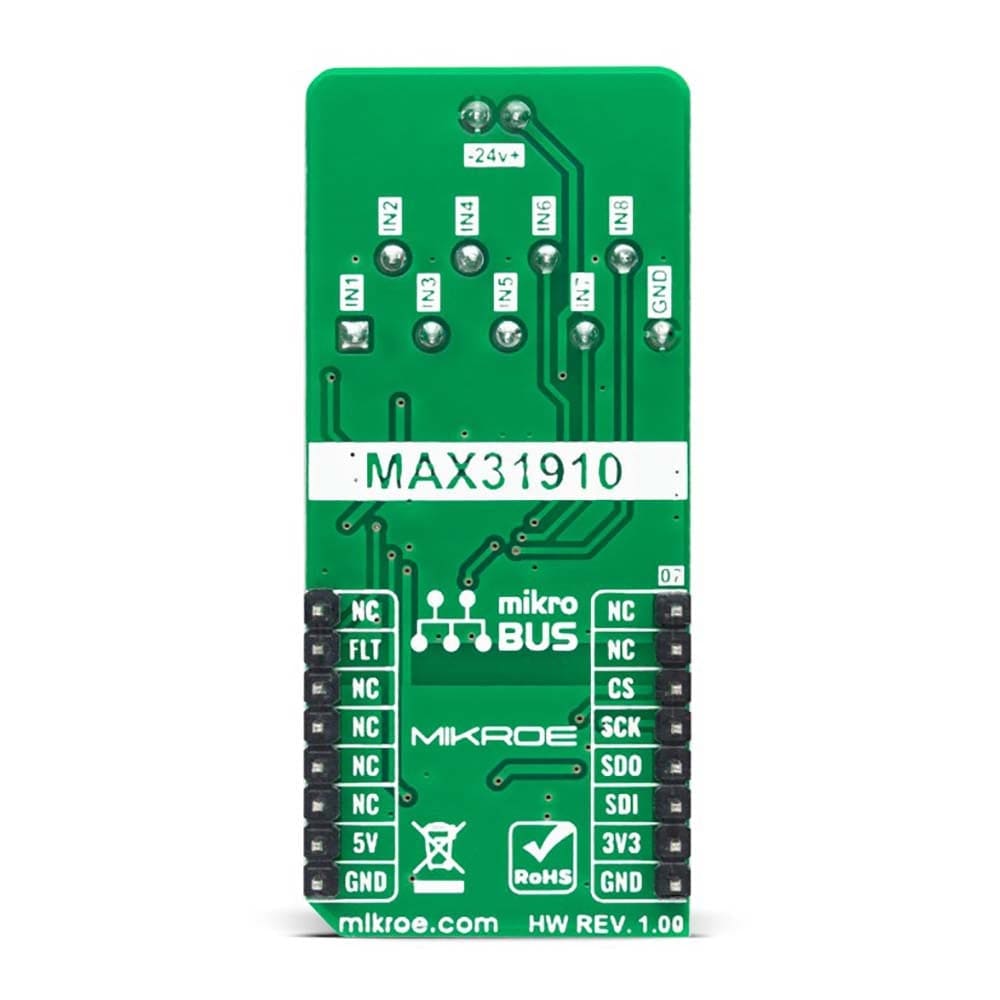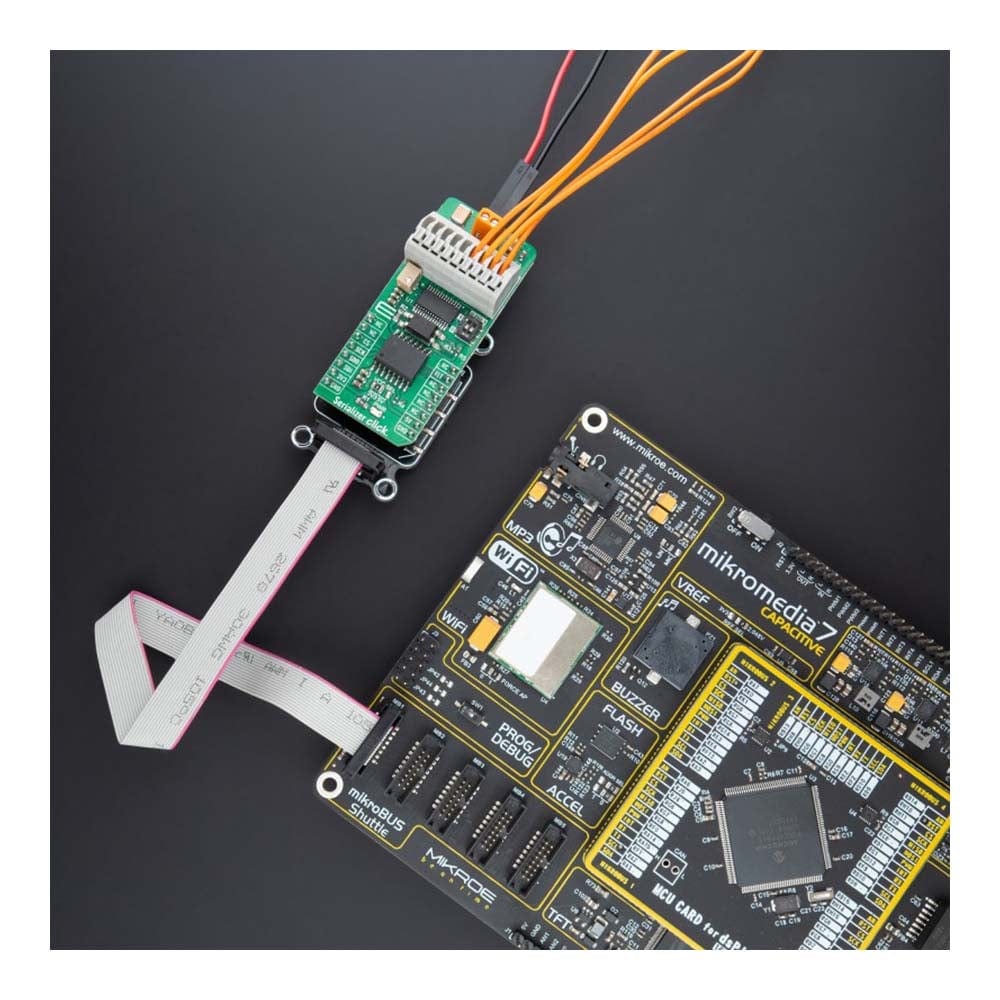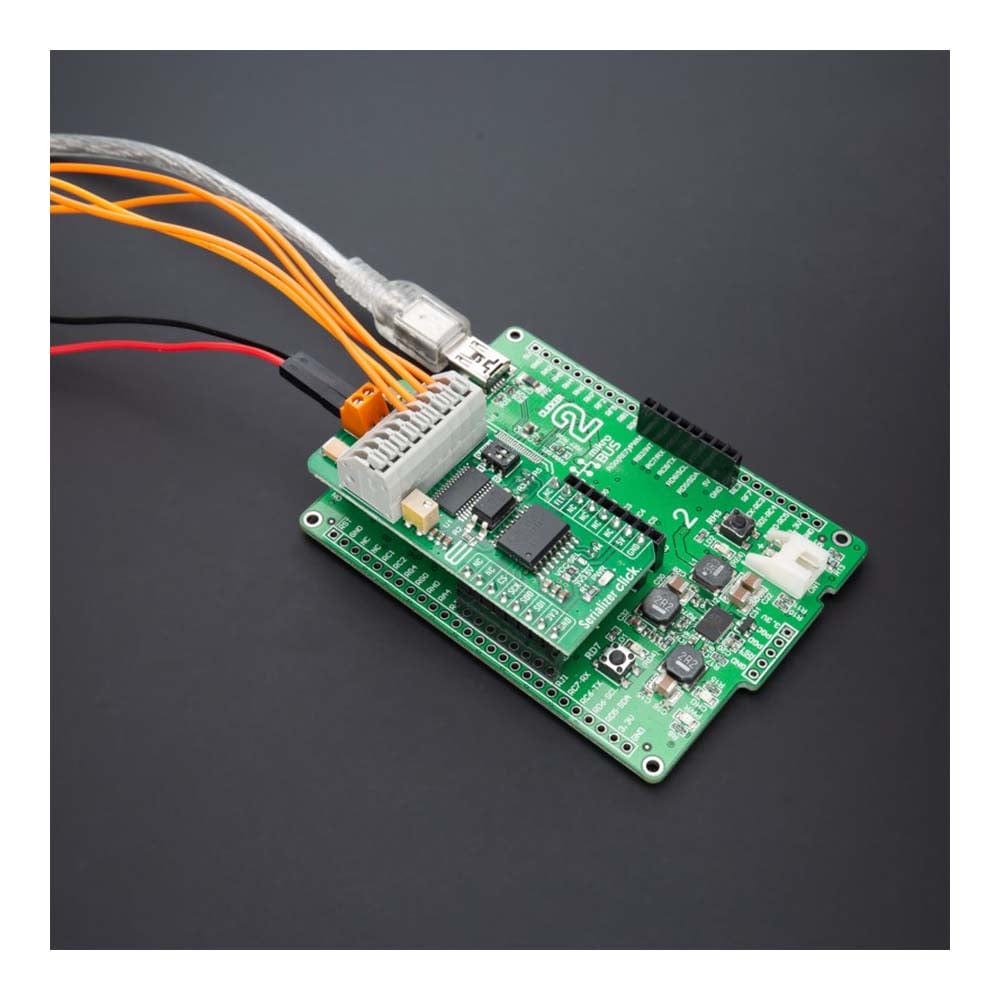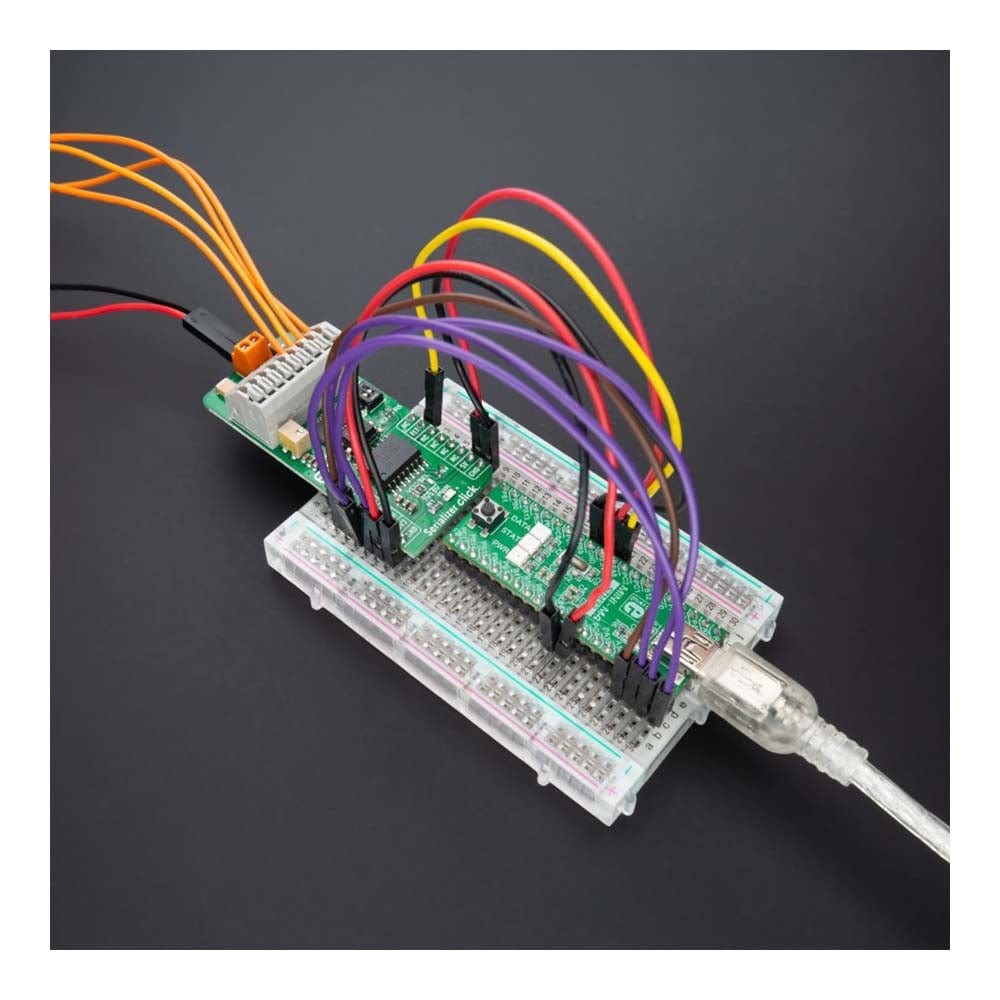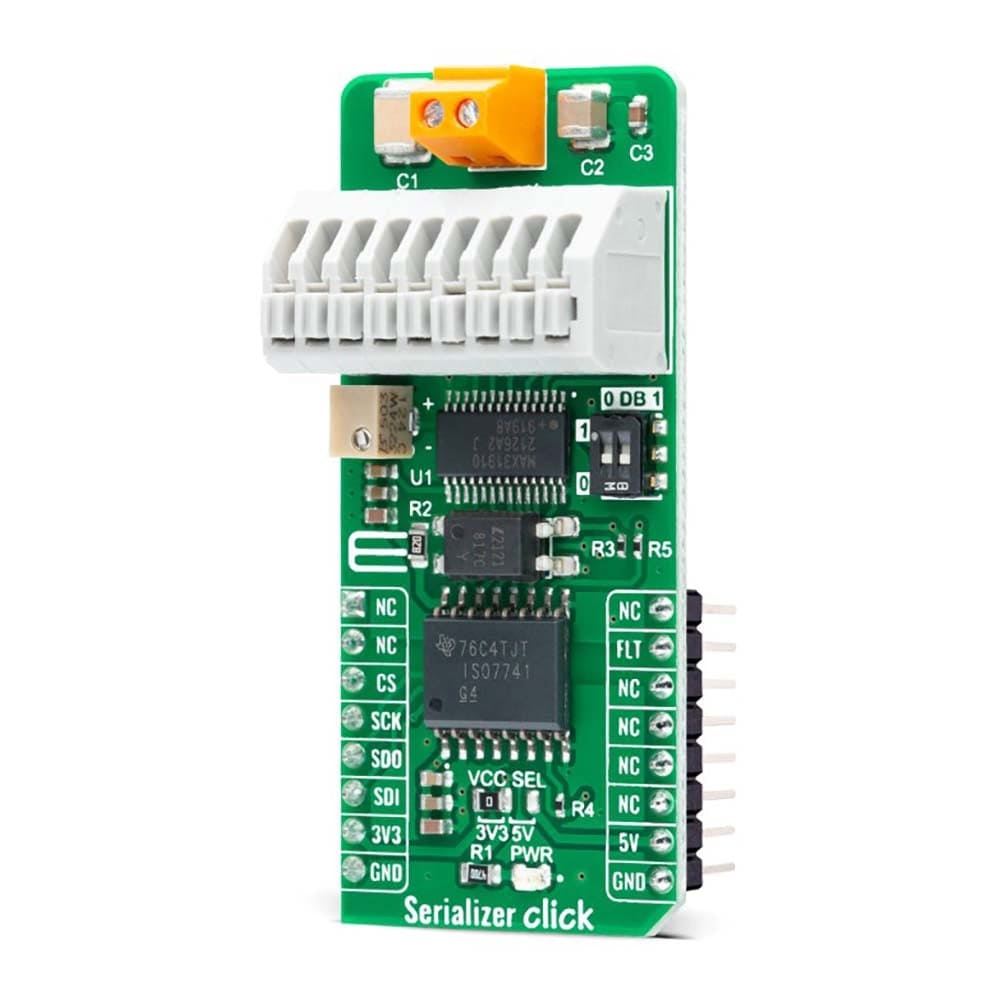
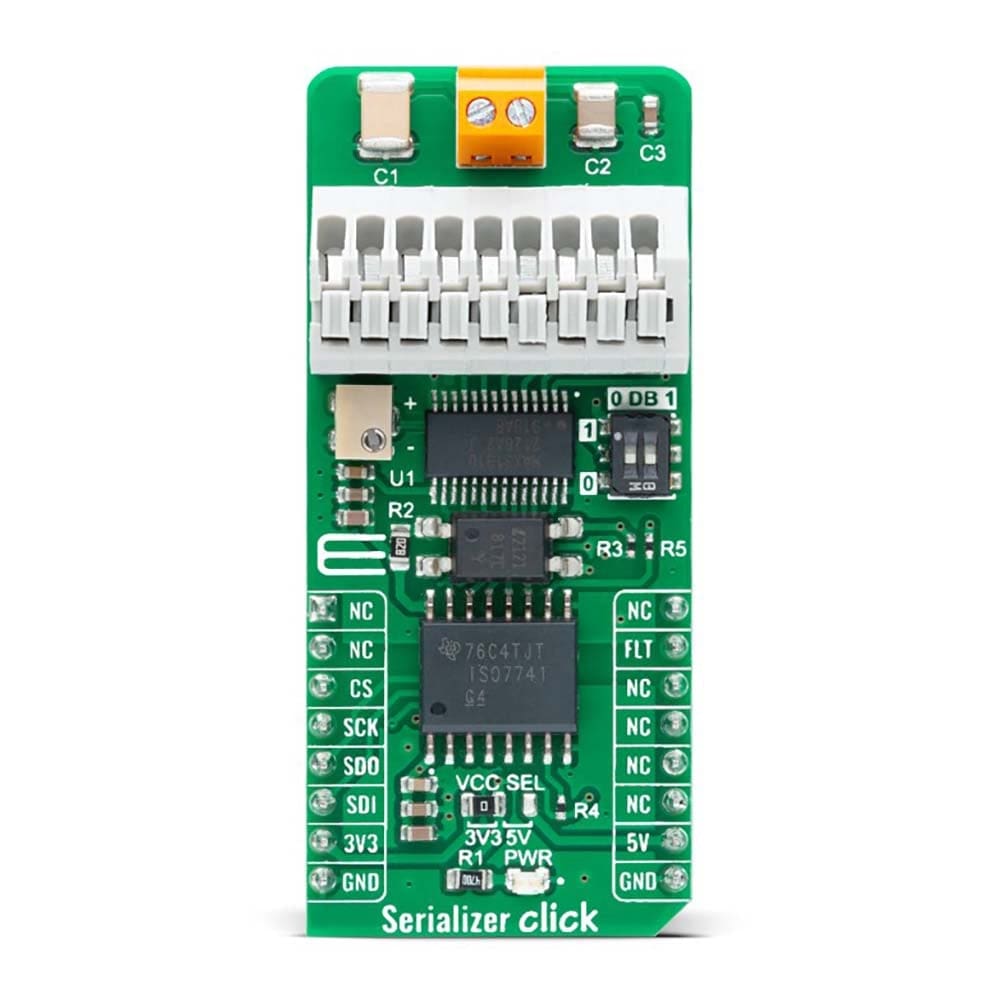
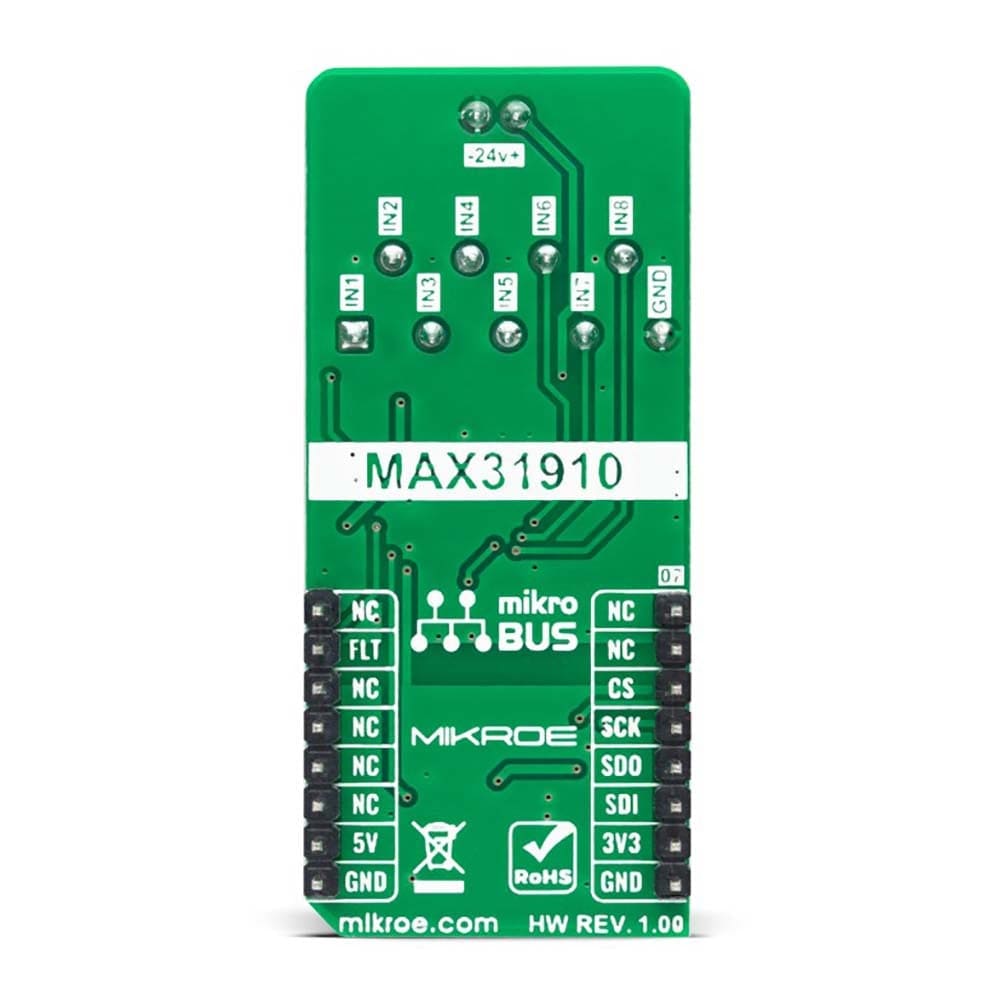
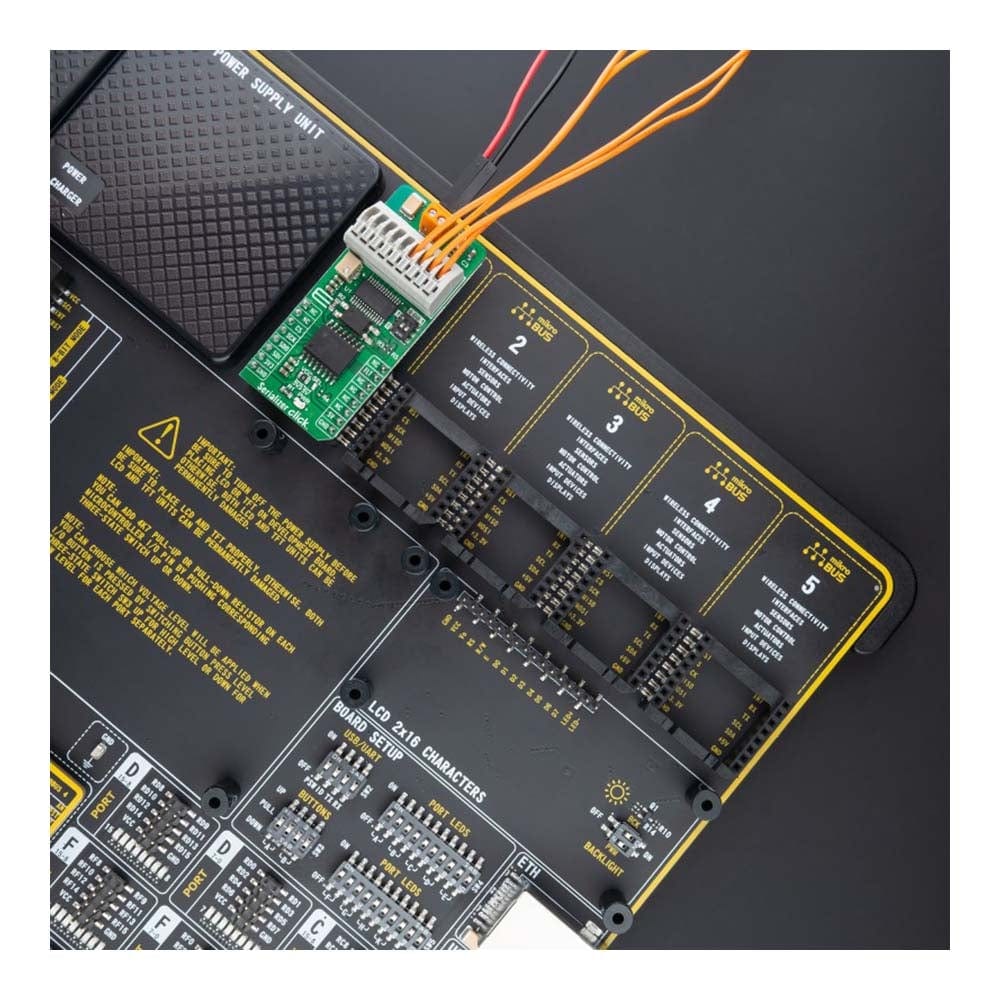
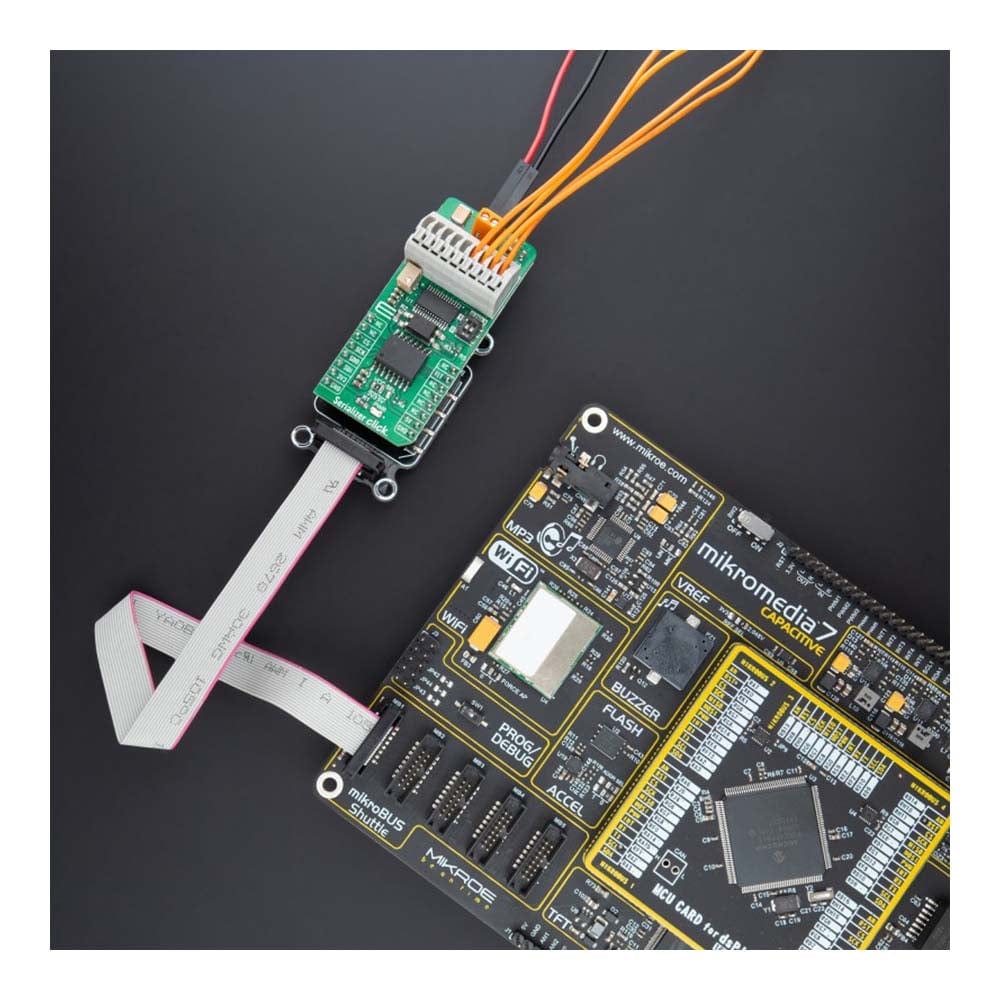
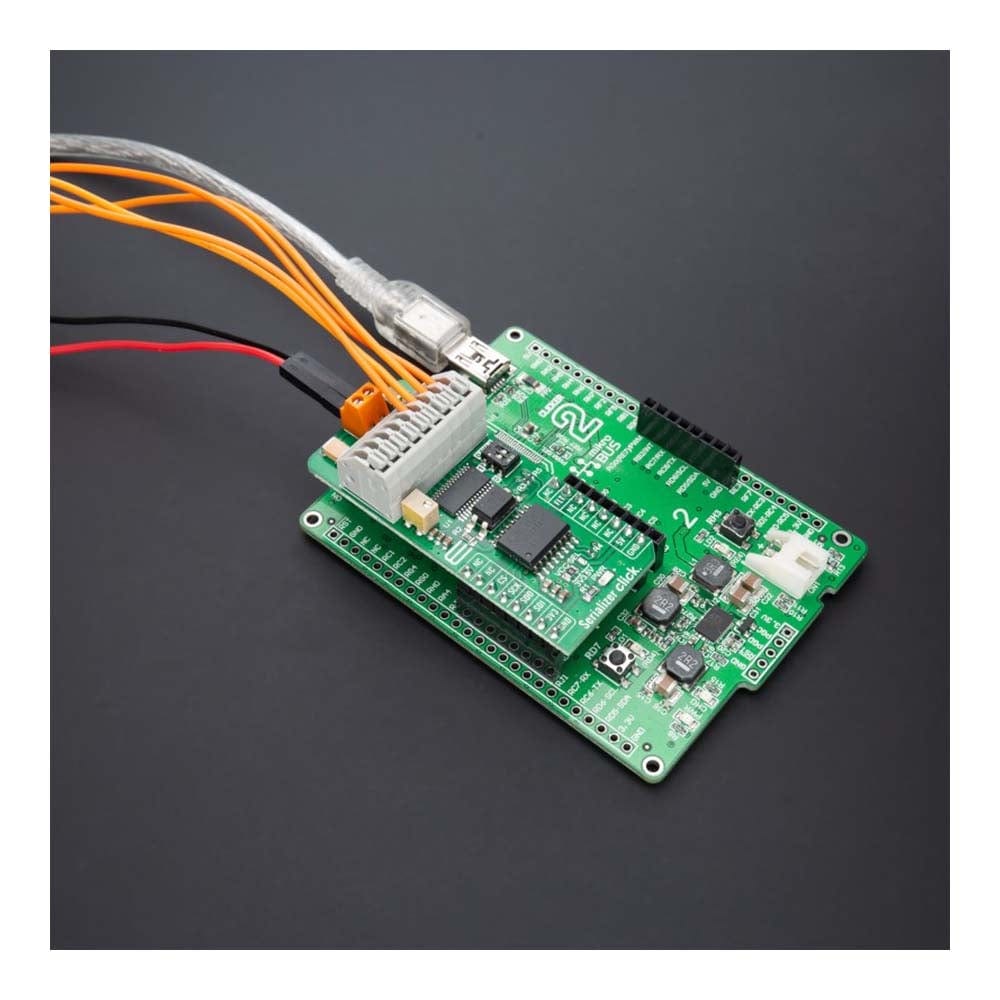
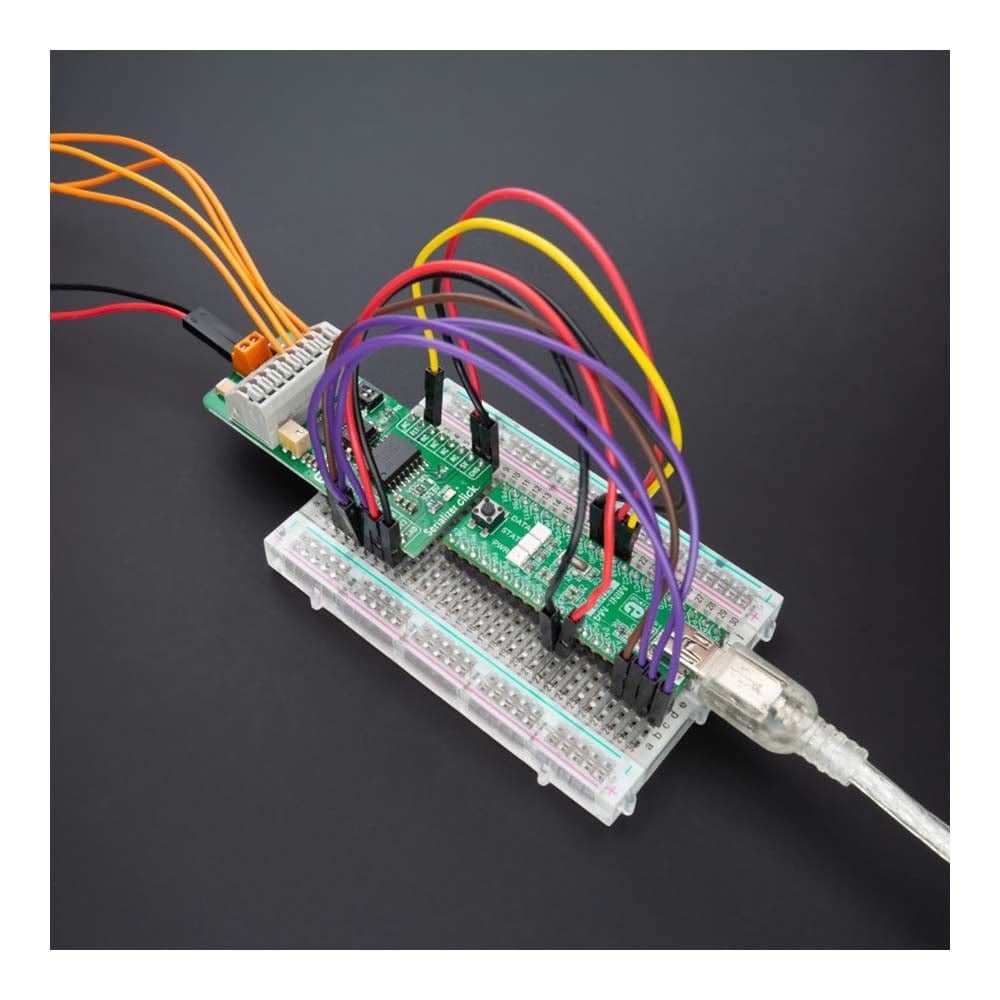
Overview
The Serializer Click Board™ is a compact add-on board that contains a digital input translator/serializer. This board features the MAX31910, an eight-channel digital input serializer for high-channel density digital input modules in industrial and process automation from Maxim. The MAX31910 translates, conditions, and serializes the 24V digital output of sensors and switches to 5V CMOS-compatible signals required by the MCU. It provides the front-end interface circuit of a programmable logic controller (PLC) digital input module. It communicates with MCU via the SPI interface and comes in configuration with an installed digital isolator.
The Serializer Click Board™ is suited for various applications such as industrial, process, and building automation, digital input modules for PLCs, and more.
Downloads
Das Serializer Click Board™ ist eine kompakte Zusatzplatine, die einen digitalen Eingangsübersetzer/Serialisierer enthält. Diese Platine verfügt über den MAX31910, einen achtkanaligen digitalen Eingangsserialisierer für digitale Eingangsmodule mit hoher Kanaldichte in der Industrie- und Prozessautomatisierung von Maxim. Der MAX31910 übersetzt, konditioniert und serialisiert den 24-V-Digitalausgang von Sensoren und schaltet auf 5-V-CMOS-kompatible Signale um, die von der MCU benötigt werden. Er stellt die Front-End-Schnittstellenschaltung eines digitalen Eingangsmoduls einer speicherprogrammierbaren Steuerung (SPS) bereit. Er kommuniziert mit der MCU über die SPI-Schnittstelle und wird in einer Konfiguration mit einem installierten digitalen Isolator geliefert.
Das Serializer Click Board™ eignet sich für verschiedene Anwendungen wie Industrie-, Prozess- und Gebäudeautomatisierung, digitale Eingangsmodule für SPS und mehr.
| General Information | |
|---|---|
Part Number (SKU) |
MIKROE-4925
|
Manufacturer |
|
| Physical and Mechanical | |
Weight |
0.02 kg
|
| Other | |
Country of Origin |
|
HS Code Customs Tariff code
|
|
EAN |
8606027389788
|
Warranty |
|
Frequently Asked Questions
Have a Question?
Be the first to ask a question about this.

